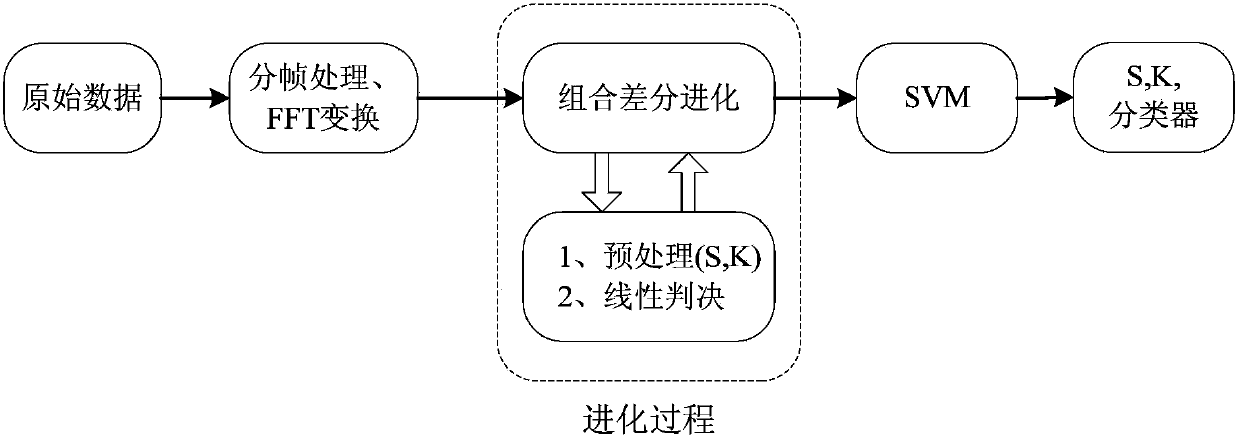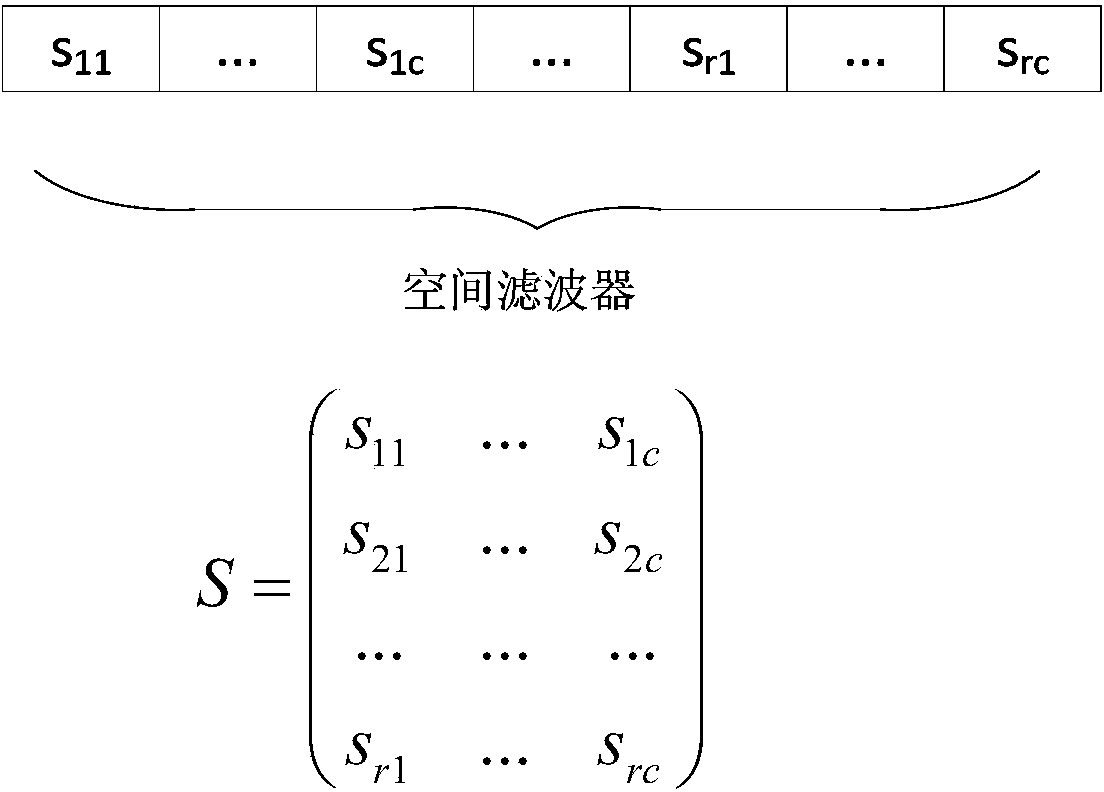Electroencephalogram feature selecting and classifying method based on combined differential evaluation
A feature selection method, a technology of EEG signals, applied in the input/output of user/computer interaction, instrument, character and pattern recognition, etc., can solve the problems of inefficiency, tedious work of spatial filter coefficients and feature vectors, etc.
- Summary
- Abstract
- Description
- Claims
- Application Information
AI Technical Summary
Problems solved by technology
Method used
Image
Examples
Embodiment Construction
[0041] The present invention will be further described below in conjunction with the accompanying drawings and embodiments.
[0042] A method for feature selection of EEG signals based on combined differential evolution, comprising the following steps:
[0043] Step 1: Select EEG signal sample data X t×c , and preprocess the EEG signal sample data to obtain training samples X is a t×c matrix, X FFT is a matrix of m×c, t is the number of data collected by each electrode, m is the number of eigenvalues of each lead in a T time period, and c is the number of leads of the EEG signal;
[0044] Step 2: Set the coloring individual and fitness function, set the policy knowledge base, iteration stop condition and coloring individual population, and initialize the parameters of the coloring individual and the number of iterations;
[0045] spatial filter and feature selector As a chromatic individual [S, K], the encoding of S is a real number, and K is encoded by 0 and 1;
[...
PUM
 Login to View More
Login to View More Abstract
Description
Claims
Application Information
 Login to View More
Login to View More - R&D
- Intellectual Property
- Life Sciences
- Materials
- Tech Scout
- Unparalleled Data Quality
- Higher Quality Content
- 60% Fewer Hallucinations
Browse by: Latest US Patents, China's latest patents, Technical Efficacy Thesaurus, Application Domain, Technology Topic, Popular Technical Reports.
© 2025 PatSnap. All rights reserved.Legal|Privacy policy|Modern Slavery Act Transparency Statement|Sitemap|About US| Contact US: help@patsnap.com



